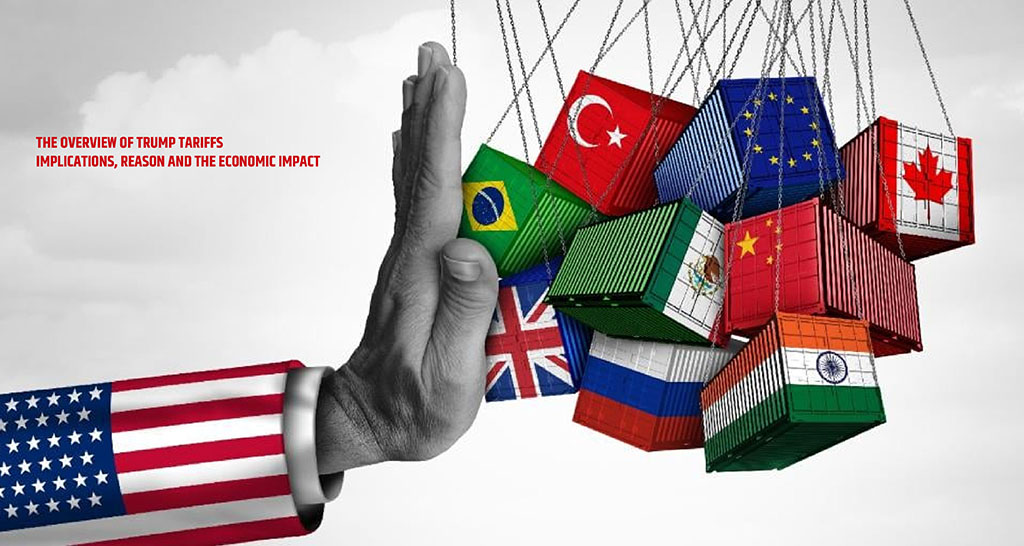Tariffs have been a hot topic these days. US President Donald Trump has signed an order to reimpose reciprocal tariffs from 10% to 41% on US imports from various nations. These tariffs pose a major challenge to global trade. In this article, we will discuss the potential far-reaching consequences of these tariffs, what they could mean for businesses, and the required steps to navigate risks.
The Tariff Implication
Trump’s tariffs story began with Canada, Mexico, and China, including reciprocal tariffs on nations worldwide, with major implications for global trade dynamics and affecting numerous commodities.
The White House has pushed a 10 percent “universal tariff” for most nations with which the US holds a trade surplus, or where the US exports more goods than it receives.
The Trump administration has also announced tariff agreements with Japan, the Philippines, Indonesia, South Korea, Vietnam, Cambodia, Pakistan, Thailand, and the UK. The president also planned to impose separate tariffs for major industries and exports like semiconductors, automotive, auto parts, steel, and aluminum.
Although the rates have reduced for most nations with which the country has a trade deficit, there are some surprises.
The initial tariff for Taiwan was 32 percent, which was later reduced to 20 percent. Although this number is still quite high compared to the deals done with neighboring countries like Japan and South Korea.
India has been imposed with a 25 percent tariff despite its strong relationship with the US. The neighboring nation, Pakistan, has cut its tariff rate from 29 to 19 percent. The tariff rate for Switzerland was initially fixed at 31 percent, and it was later raised to 39 percent. The tariff rate for war-torn nations Syria and Myanmar is set at 41 percent and 40 percent, respectively.
Earlier, Canada had to face 25 percent tariffs that were later increased to 35 percent.
Additionally, the Trump government has imposed a 30 percent tax on Algeria, Bosnia and Herzegovina, Libya, and South Africa; 40 percent for Laos; and 35 percent for Iraq and Serbia.
The Key Reasons behind Tariffs
Trump mentions that the new tariff rates will encourage U.S.-based people to buy more American-made goods, and it will boost the tax and investment overall.
He ultimately aims to reduce the gap between the goods US consumers buy from other nations and those it sells to them.
President Trump has taken a nation-by-nation approach to trade. There is no solid theory to specify for each nation; nations have imposed the tariff rates according to the president for trade reasons or otherwise.
The Worldwide Impacts
For most nations, these newly announced tariffs cut GDP. First, Switzerland’s GDP is expected to be reduced by 0.47 percent, which is equal to $1,215 per household annually. Thailand’s GDP rate will go down by 0.44 percent, and Taiwan’s GDP will go down by 0.38 percent.
In China, the GDP is expected to be harmed by 66.9 percent, and in the European Union, it will be affected by $26.6 billion. While New Zealand faced low additional tariffs, its GDP grew by 0.15%, which is equal to $204 per household.
The impact on the European economy will depend on the actual tariff rate. Initially, the EU commission had created a response to steel and aluminum tariffs, but later it suspended this retaliation. The effect on trade for the EU is expected to be lower than that of the US. US exports to the EU might have gone low.
The impact on the GDP would be low, and the US would be affected more because of its reliance on imports of final-consumption goods and inputs to US manufacturing.
The whole financial market has been buoyant, and these announcements have caused volatility on the stock markets across the world. Numerous people have been affected by stock market price changes directly or indirectly. Even the US dollar value has fallen, which is considered a safe asset.
The IMF and OECD both reduced their predictions for global economic growth in the year due to tariffs. They have also warned about the bad impact of these tariffs on the US economy.
According to analysts, tariffs are feeding into the US inflation rate, as companies pass on most of their higher costs.
Companies are importing fewer foreign goods, making the available products expensive.
The new tariffs have also caused tighter custom checks at the US borders that are leading to a late supply of products. Further, the Trump-led US government will soon implement new rules to fix the tariff rates on transhipped goods.







